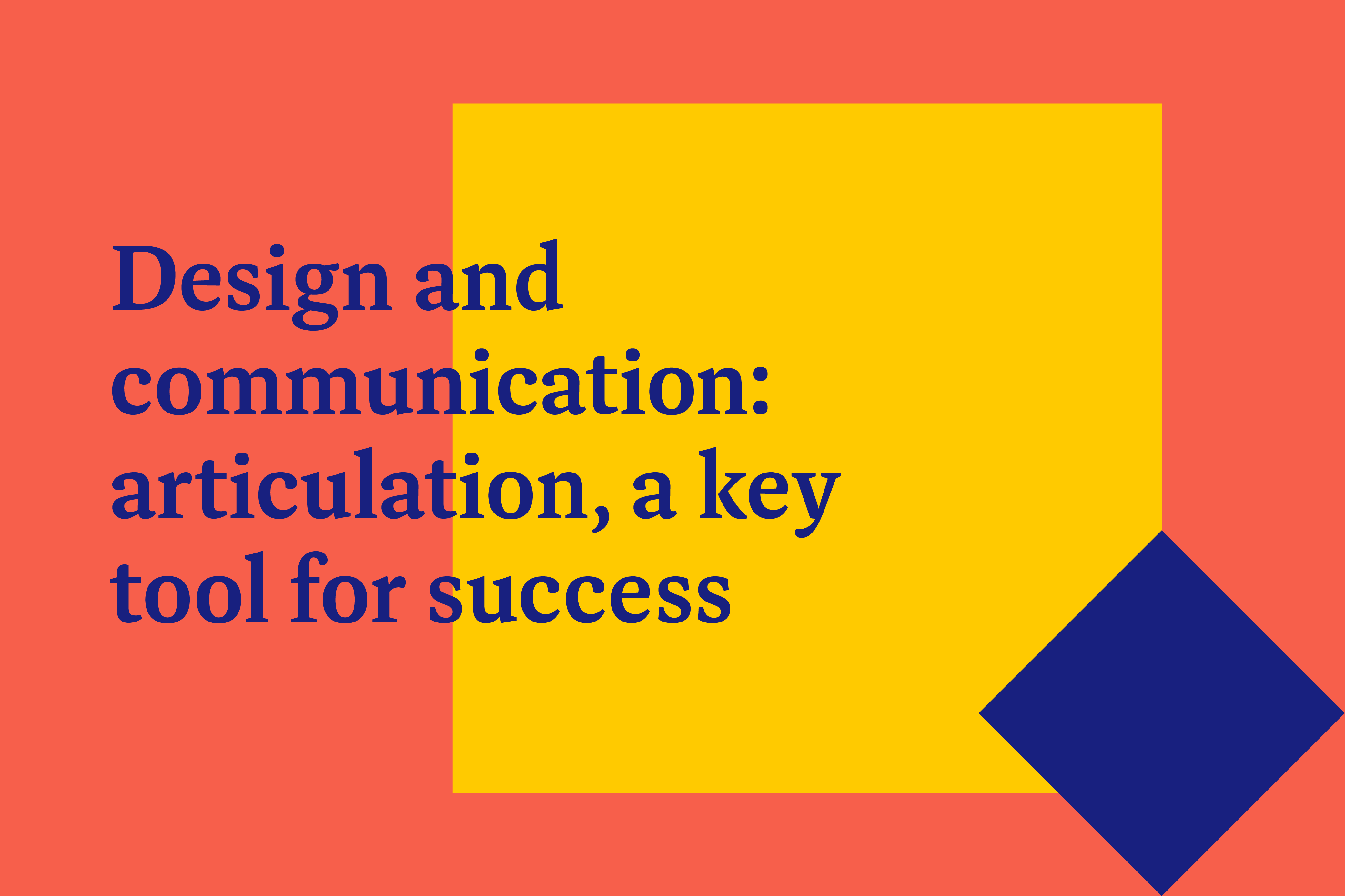If you read the previous 100 Archive blog post, you'll be aware that I'm writing a series about the importance of non-visual communication for designers. From working with, and speaking with, many visual creatives over the years, a common thread surfaced. This was that they underestimated how much non-visual communication was expected of them. And, how they felt unprepared or unable to do so.
Articulation can be written or spoken
Throughout this series, I use 'articulation' when I'm talking about non-visual communication, generally. However, when necessary, I will differentiate between written and spoken communication. Spoken communication can include: presentations, meetings, client pitches and keynote speeches. Written communication can be: applications of all kinds from grants to job opportunities, case studies, proposals and team collaboration.
You'll need to use both spoken and written communication throughout your career, and the more you progress, the more you'll need to hone those skills. For example, if you're a lead designer heading up a team, everyday you'll need to explain your ideas to your team. And while they may be designers working with you, without clear instructions or feedback, they will struggle to get to grips with your brief. In cases of collaboration, you'll need to draw on both spoken and written skills to articulate meaning.
Make note of everything
When you're embarking on a new project, it starts with research. You'll look up similar projects, what peer clients are doing, what current trends are. Most of this you probably do automatically, or draw on your inspiration files, or where you keep cool stuff you've seen. Make a note of the terms you searched for, and why. Write down the feeling you had when you saw something, and how it clicked for the particular project you're working on.
These notes are the starting point of articulation. They're the spark for why you started going in that direction, and being able to clearly explain why is the first step. Begin by rationalising, as much as you can, why you started there. Is it because of colour theory? Is it due to seeing a competitor do something similar? Is it because you've never seen it done that way before? By diving into your thought process, you're beginning to unravel and understand your rationale. Show a friend who isn't a designer, and explain your starting point and see if they understand what you're saying.
Go big, then condense
I'm the first to admit that when I write anything, I start big. I put absolutely everything on the page first, then chip away at the stuff that's not needed until I'm left with something clear and concise. When you're starting an application, presentation, or anything where you need to articulate design, put everything down. You have a process you follow for every project you do, even if you're not fully aware of it. Write it down. Even simple things like: I made one version and didn't look at it for a day, then came back and realised it wasn't working.
When you're applying for funding opportunities, jobs, or pitching for work, you'll often be asked how you would approach the work. Having a record of your process, including the tiny details, allows you to edit the application and explain your process, including things like stepping away to have a look with fresh eyes. Which is essentially what you're doing when you leave something alone and come back to it.
Make it a habit
Every time you start a new project, make it a habit to outline your process. You'll see patterns emerging, and you'll be able to spot when something works, or doesn't. You'll be able to track your process and tweak it as necessary, but most importantly, you'll be familiar with your process enough that you can explain it step-by-step. This habit will stand to you long-term, allowing you to save time, and succeed as a designer.
In the next article, I'll provide practical advice about writing applications and proposals. Keep an eye out for it.
